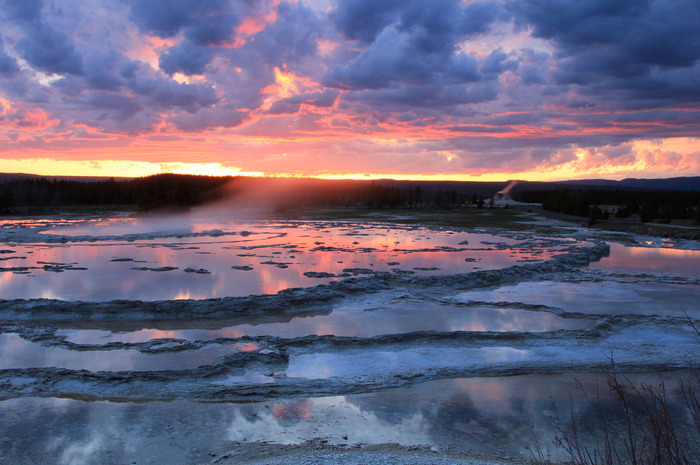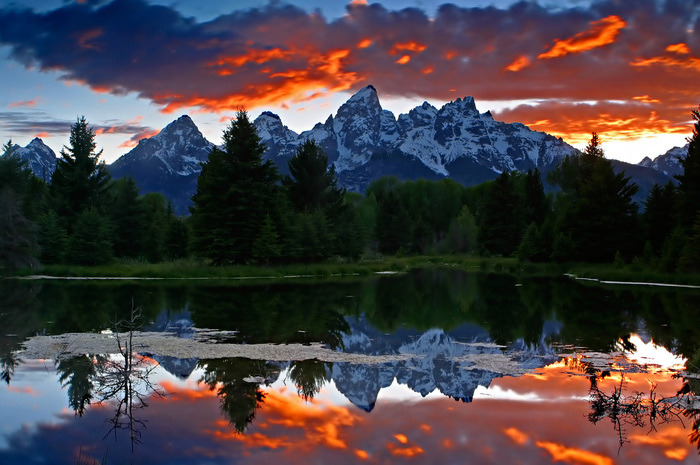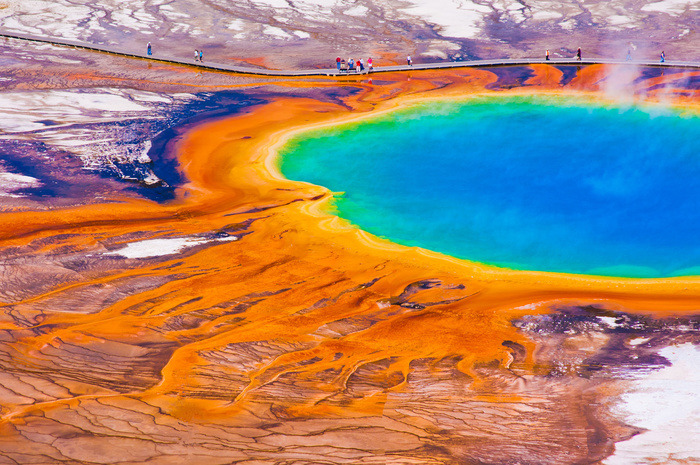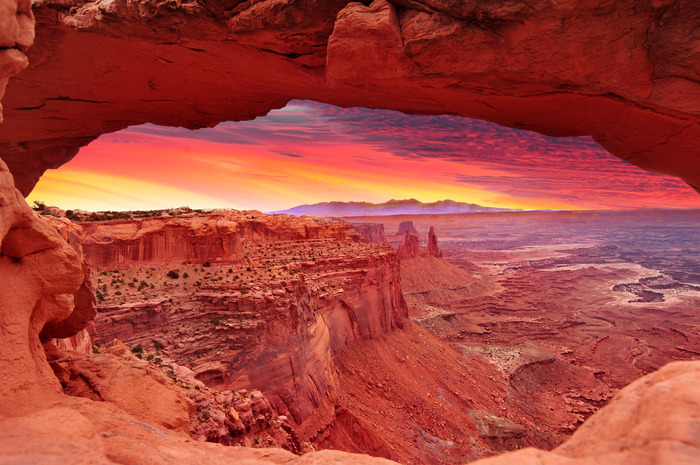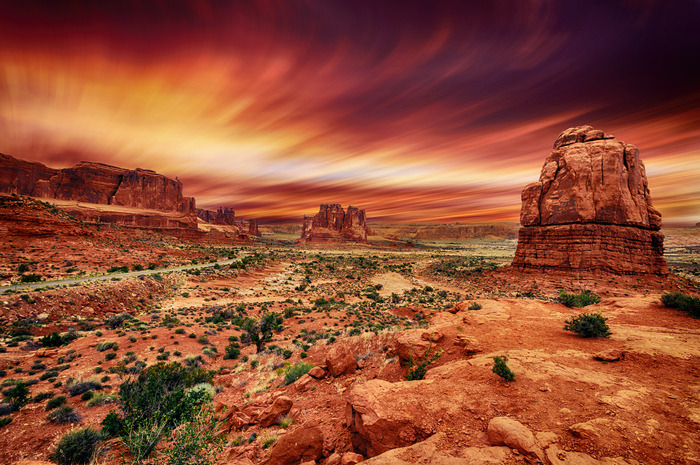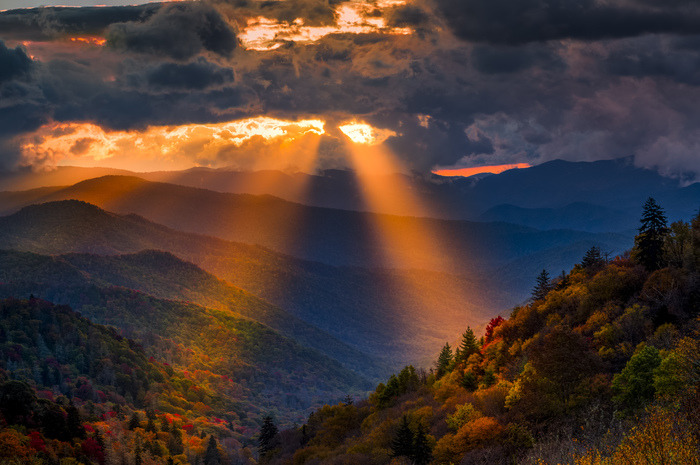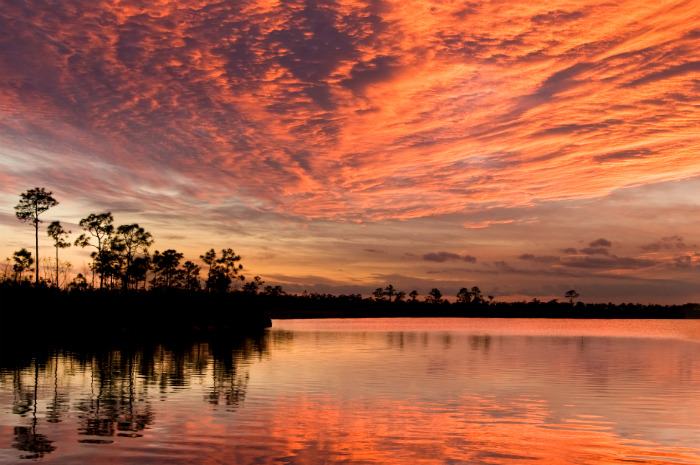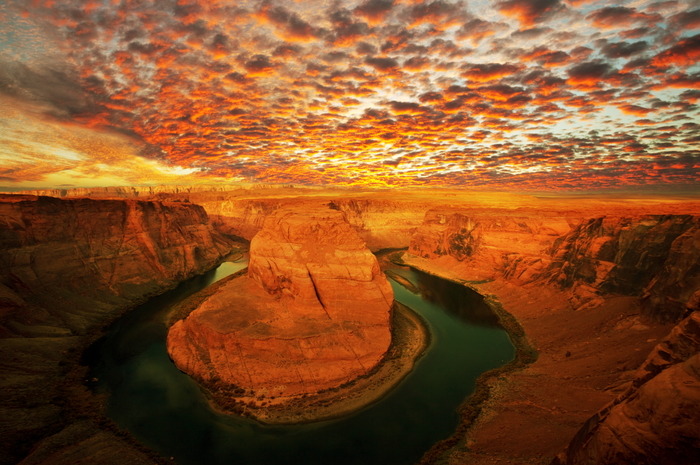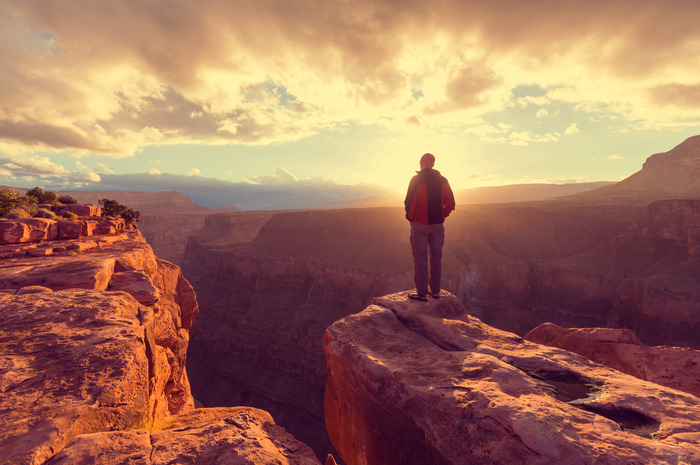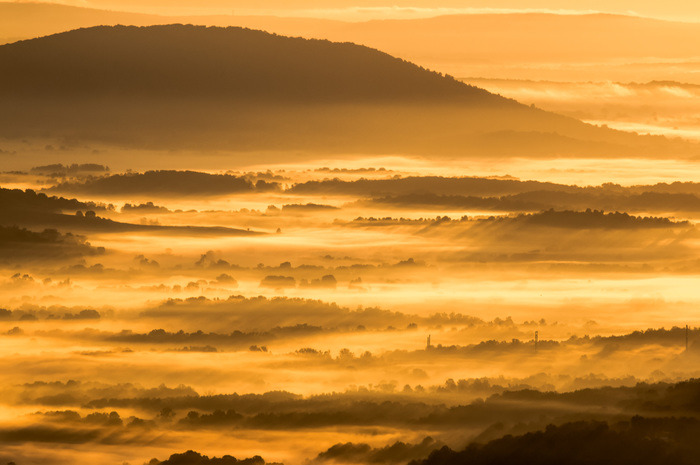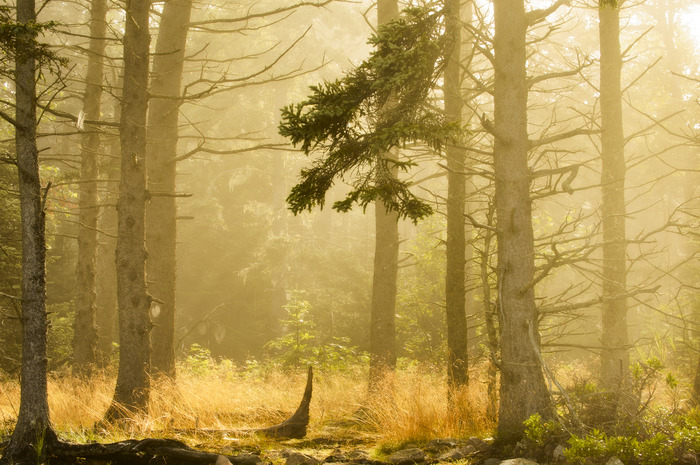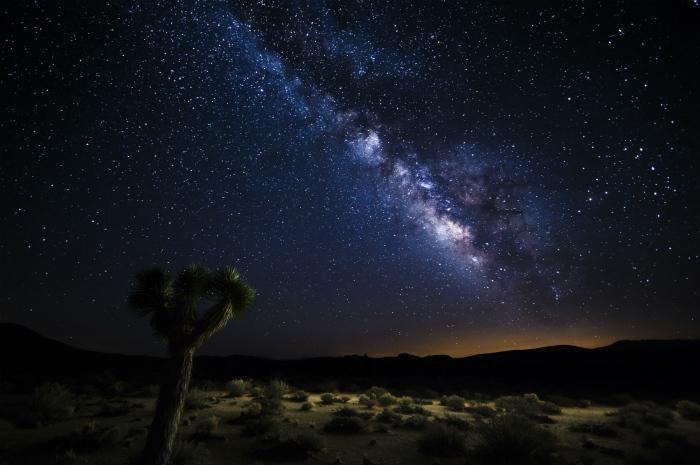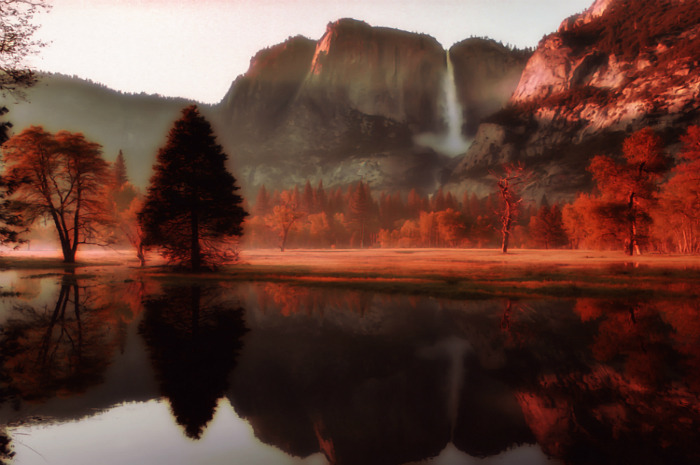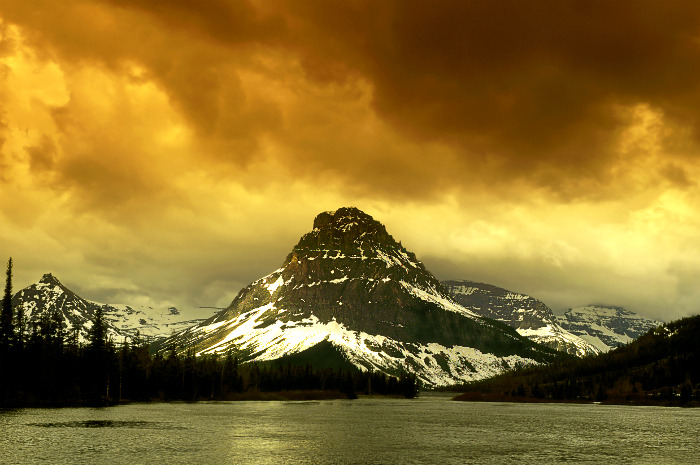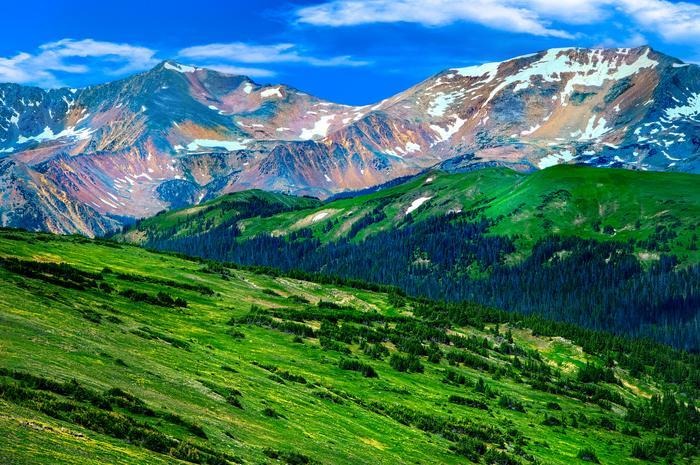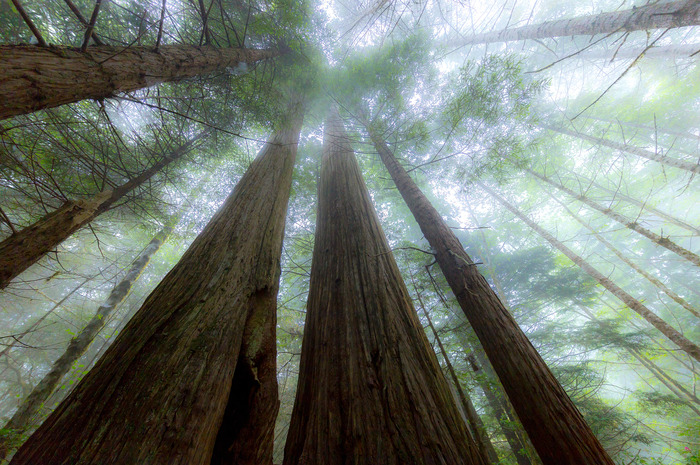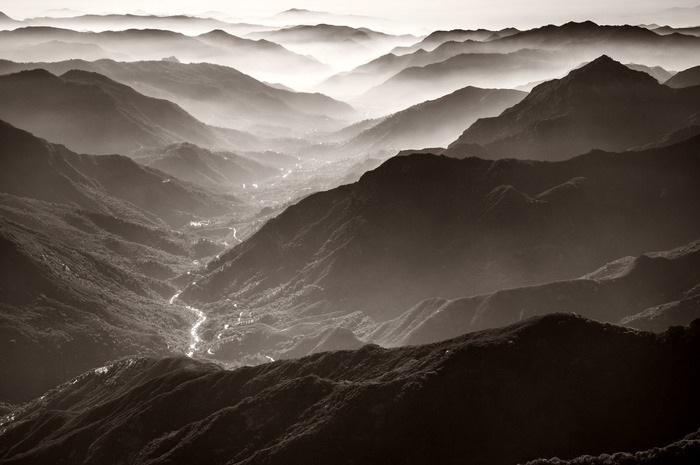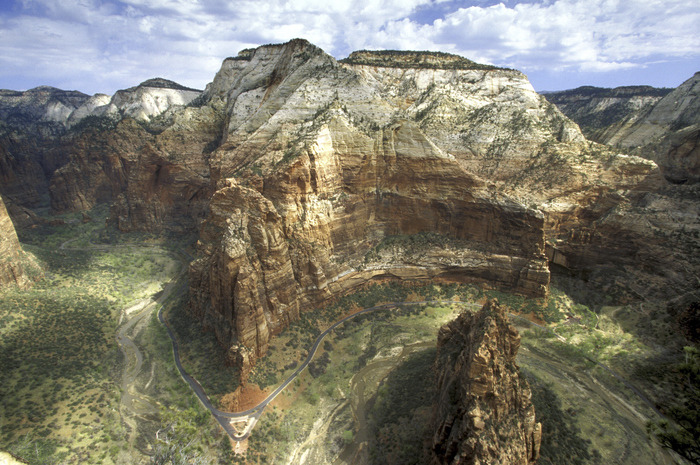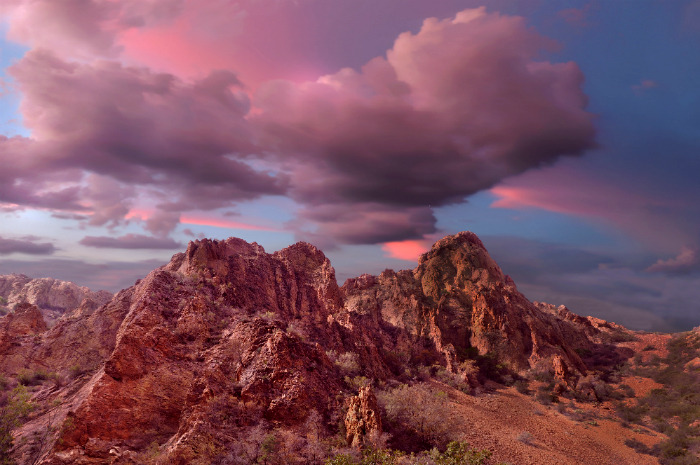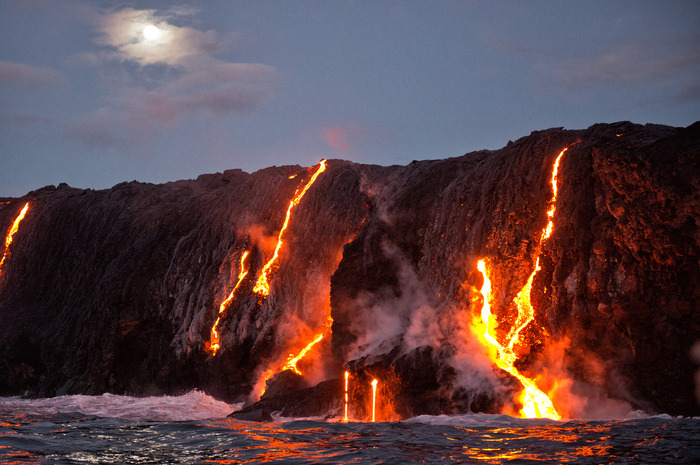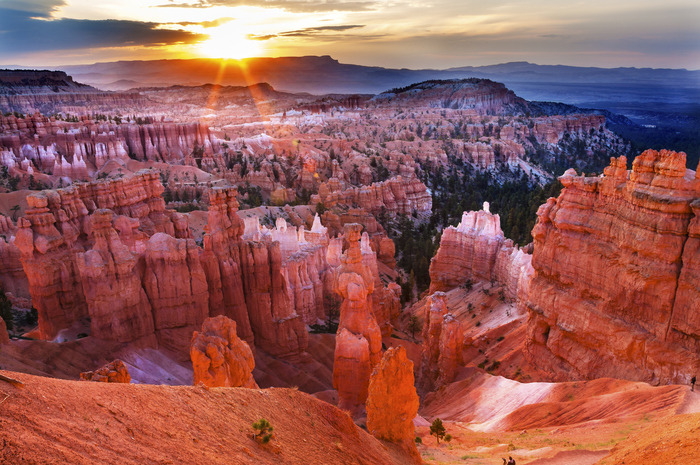Jawdropping Photos Of The Most Spectacular National Parks
The National Park Service turns 100 on Aug. 25, 2016. The organization preserves conservation forests, mountains, gardens, lakes, wildlife and rivers in national parks across America. Some people celebrate the birthday of "America's best idea" by visiting all 59 national parks in 52 weeks in an airstream. Spending time in the wilderness is one of the best ways to cope better with stress, feel happier and have more self-esteem, according to science. The ethereal views will recharge and inspire you for weeks ahead. The parks won't charge an entrance fee from August 25 through 28, on National Public Lands Day on September 24, and November 11 which is Veterans Day.
Grand Teton National Park
The splendor of Grand Teton is as unique as the landscape is emotional. Watch the sunset at the Oxbow Bend of the Snake River or Signal Mountain Summit. The Teton Crest Trail is the highlight hike of the park. Explore the glorious Teton Range, witness the high divides and passes, majestic alpine lakes, and stunning views at the legendary rocky peaks. The best time to go is between July and September when you'll see all kinds of colors, flowers and wildlife. There are plenty of campsites in case you decide to take a break along the 37-mile-trail. Also, plants and flowers are an incredible sight, even though they are a bit overshadowed.
Yellowstone National Park
Yellowstone, the very first national park established in the world, is one of the most famous recreational areas in the U.S. The 3,500 miles stretching from Wyoming to Montana and Idaho are also among the most visited. See the largest active geyser field in the world and the most renowned geyser – Old Faithful; see grizzly bears in their natural habitat; be a cowboy for a day, and go on an amazing whitewater rafting trip. The Lower Geyser Basin in Yellowstone is one of the most dangerous places in all national parks. The large area of hydrothermal activity is the site of the Great Fountain geyser. Its splashy eruptions send jets of diamond droplets bursting 100-200 feet in the air, while waves of water cascade down the raised terraces.
Canyonlands National Park
Canyonlands National Park preserves a colorful landscape of sedimentary sandstones eroded into countless canyons, mesas and buttes by the Colorado River and its tributaries. The park is a wilderness of rock, with some of the most remote terrain the in lower 48 states. Active adventurers will want to explore the Maze, but getting lost here is really easy. Always be sure to have a map, a charged phone, a GPS, and a compass. The canyons are connected in a way that is truly a labyrinth.
Arches National Park
March through April is the busy season at the Arches. Contrasting colors are just one reason why people are drawn to the park's beauty. Another is the more than 2,000 natural stone formations unlike anywhere else in the world. Visitors love the 3-mile round-trip trek to Delicate Arch and the Fiery Furnace Walks, which are a real gem. If you want to have an arch to yourself, you must go in the winter. Have you seen arches and red rocks sparkle with ice and snow contrasting the clear blue sky? This natural phenomenon doesn't happen in a lot of places. Most hiking trails remain open year-round.
Great Smoky Mountains National Park
The park, its 800 miles of trails, stunning landscape and 2,100 miles of streams are the most visited in the country. The stunning views make for perfect day hikes. This is one of the best parks for camping. Deep Creek Campground is an awesome place to stay for a few days. It's all about the water. This 92-site campground is ideal for all kinds of freshwater activities, some of which are more intense than your usual workout. The more adventurous campers can set up at horse camps. In the winter, imagine those unforgettable Table Mountain Pines covered in snow –completely serene. The wildlife in general is abundant.
Everglades National Park
The Everglades made the Top 4 in the best national parks ranking this year. And there is a good reason for it – the wildlife is incredible, you can't just take a boat tour to view crocodiles and dolphins anywhere or go hiking with the chance to see turtles and alligators along the way. But there is a lot more to do in the largest subtropical wilderness in the country. You can see certain places only by kayak; the photos are gorgeous; the wildlife is like nowhere else; and kids love it.
Horse Shoe Bend
Horseshoe Bend National Military Park preserves an epic historical battle that helped bring Andrew Jackson national attention and got him to be elected as president in 1828. The trailhead to this easy hike is located just outside of Page, Arizona. It overlooks one of the most spectacular views on the Colorado River, 4 miles south of the Glen Canyon Dam, and 7 miles north of mile zero of the Grand Canyon.
Grand Canyon National Park
Grand Canyon National Park is full of so much to do and so many sites to explore. Rafting there is an incredible experience, and the backcountry is amazing. Visitors can also explore the park by camping, biking, guided tours and summer/winter hiking. It's tempting to want to climb from the rim down the river along the Bright Angel Trail, but you have to consider your realistic ability to complete the hike. It's 4,380 feet in altitude and can get scorching hot. This combination can easily lead do severe dehydration and heat exhaustion, and there are about 250 rescue operations a year.
Shenandoah National Park
Visitors get to explore more than 200,000 acres of beautiful mountains, stunning waterfalls and rich wildlife. Hiking a section of the Appalachian Trail in perfect 60-degree weather is like a dream. Take a road trip along the Skyline Drive, the only public road through the park, for unmatched beauty and easy access to backcountry adventures. The park is also perfect for stargazing because of the high elevation in the Blue Ridge Mountains and relative remoteness.
Acadia National Park
There are many reasons you need to add Acadia to your bucket list. More than 2.5 million people visit the park every year. Bike rides on quaint carriage paths, kayaking the rugged natural coastline and hiking the tallest mountain on America's Atlantic Coast—however if you enjoy spending time outside the park has a place for you to do it. The busiest time for Acadia is in the summer, but the late fall offers some of the most spectacular conditions, including vibrant foliage and a series of huge storms that roll in over the Atlantic.
Death Valley National Park
People love Death Valley for its backcountry and stargazing. The park has approximately 3.4 million acres of mountains and deserts. This is where you can see meteor showers and lunar eclipses, as there is almost no artificial light disturbing the breathtaking views. This is a Gold-Certified International Dark Sky Park because of its dry climate and clean air, as the area is rugged and undeveloped. Enjoy the beautiful borders and out-of-this-world sand dunes and peaks; go to Dante's View for sunrises and Zabriskie Point for sunsets.
Yosemite National Park
Yosemite was the No. 1 national park in our ranking this year. In wintertime, peaks get snowy, waterfalls and streams freeze. Ice skating outdoors is a family favorite activity. It is also one of the most visited and popular national parks in the U.S. An iconic feature is its granite monolith of Half Dome. Standing nearly 8,800 feet above sea level, whether you ascent up the cables or admire it from afar, Half Dome is an experience you'll never forget. The Mist Trail is probably the most famous attraction, even though it's very dangerous. There are steel cables to hang on to as you climb but rain makes them and the rock very slick. Also, visit Yosemite Falls and go horseback riding and rock climbing.
Glacier National Park
Pristine forests, incredible mountains, stunning lakes and spectacular hikes are just some of the many things you have to look forward to when visiting Glacier National Park. Hike Grinnell Glacier for views of beautiful waterfalls, take a boat ride along the beautiful lake in Glacier International Peace Park, witness stunning wildlife and make sure you take a ride along the Going-to-the-Sun Road; it's a scenic drive that takes you through the heart of the park over Logan Pass.
Rocky Mountain National Park
If you want a scenic adventure, explore the Rocky Mountains. Backcountry skiing and sledding in Hidden Valley are common among locals and tourists in the winter. While you are skiing around, you are most likely going to see many elk deer and moose roaming around the park. In the summer, you may even get close to bears, coyotes and cougars. This gorgeous park offers some of the most stunning and diverse mountain sites in the country. Hiking is a very exciting way of exploring its riches and you "feel like you're on top of the world," according to NPS.
Redwood National Park
The tallest trees on the planet may be a short drive away from where you live, right in Redwood National Park. The Tall Trees Grove is the visitors' favorite hike – about 4 miles in each direction. But the trees are not the only attraction. Huge grasslands, oak forests, wild rivers and dozens of miles of beaches keep the park diverse and entertaining.
Sequoia National Park
Hiking is exceptional and the backcountry is unique. Go on a special trip to General Sherman, the 2,200-year-old giant sequoia with an estimated volume of more than 52,000 cubic feet (roughly the same volume of 16 blue whales, the world's largest mammal). It is the largest tree by volume on the planet. Each year, General Sherman grows enough new wood to make a 60-foot tall tree of typical proportions. Take an overnight wilderness trip to submerge yourself in the natural world, or participate in special ranger-led programs. Explore the underground world of Sequoia on a Crystal Cave tour.
Zion National Park
Zion National Park is regal all year-round but the weather is not. Spring is the time to see the waterfalls of Zion in their prime and the gorgeous contrast between red rocks and the abundance of green foliage. See the huge sandstone cliffs, incredible wilderness and variety of wildlife. Zion holds the most diversified and easily accessible hiking trails. But Angel's Landing, The Narrows and The Subway aren't for everyone.
Big Bend National Park
Big Bend is ideal for camping under the stars. On a clear night visitors can see as far as 2 million light years away to the Andromeda galaxy. Located on the border between the U.S. and Mexico, the remote location, lack of clouds and low humidity of this park allow for incredible views of the skies. The best things about Big Bend in the spring are the migratory birds, wildflowers and canyon views. Conservation fans will have a blast – more than 440 species of birds flock to the park in the springtime; the famous Texas bluebonnet wildflower can only be seen this time of year; hiking trails take you through rivers, mountains, and deserts in one trip.
Hawaii Volcanoes National Park
Kilauea, an active shield volcano, is extremely dangerous not because of the hot ash and lava, but because of toxic fumes that are released. It is one of the most incredible active volcanoes you can actually hike. A major eruption in 1983 produced Pu'u 'Ō'ō vent which still produced lava flows. Try hiking the Kīlauea Iki Trail. You will descend through a lush rainforest to the floor of the solidified, but still steaming Kīlauea Iki Crater lava lake, according to NPS. Bring water, food, hat, sunscreen and rain gear.
Bryce Canyon National Park
Bryce Canyon National Park in Utah is many photographs' favorite. Its wilderness and otherworldly rock spires lure more than a million visitors every year. This is where hoodoos and forest are mixed together. The park is actually not a canyon, according to the NPS. Rather, it is a spectacular series of more than a dozen amphitheaters, each of which is carved at least 1,000 feet into the chromatic limestone of the Paunsaugunt Plateau. The park is perfect for stargazing; camping is exceptional; the Fairyland Loop is absolutely gorgeous, especially in the winter; and biking doesn't get much better – you may even go up 9,000 feet in elevation.
